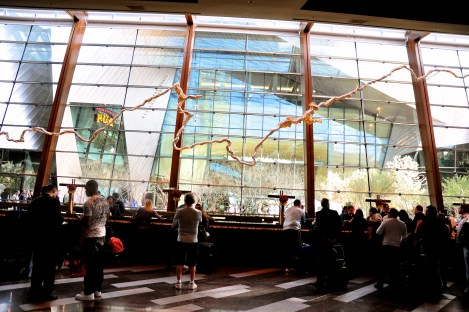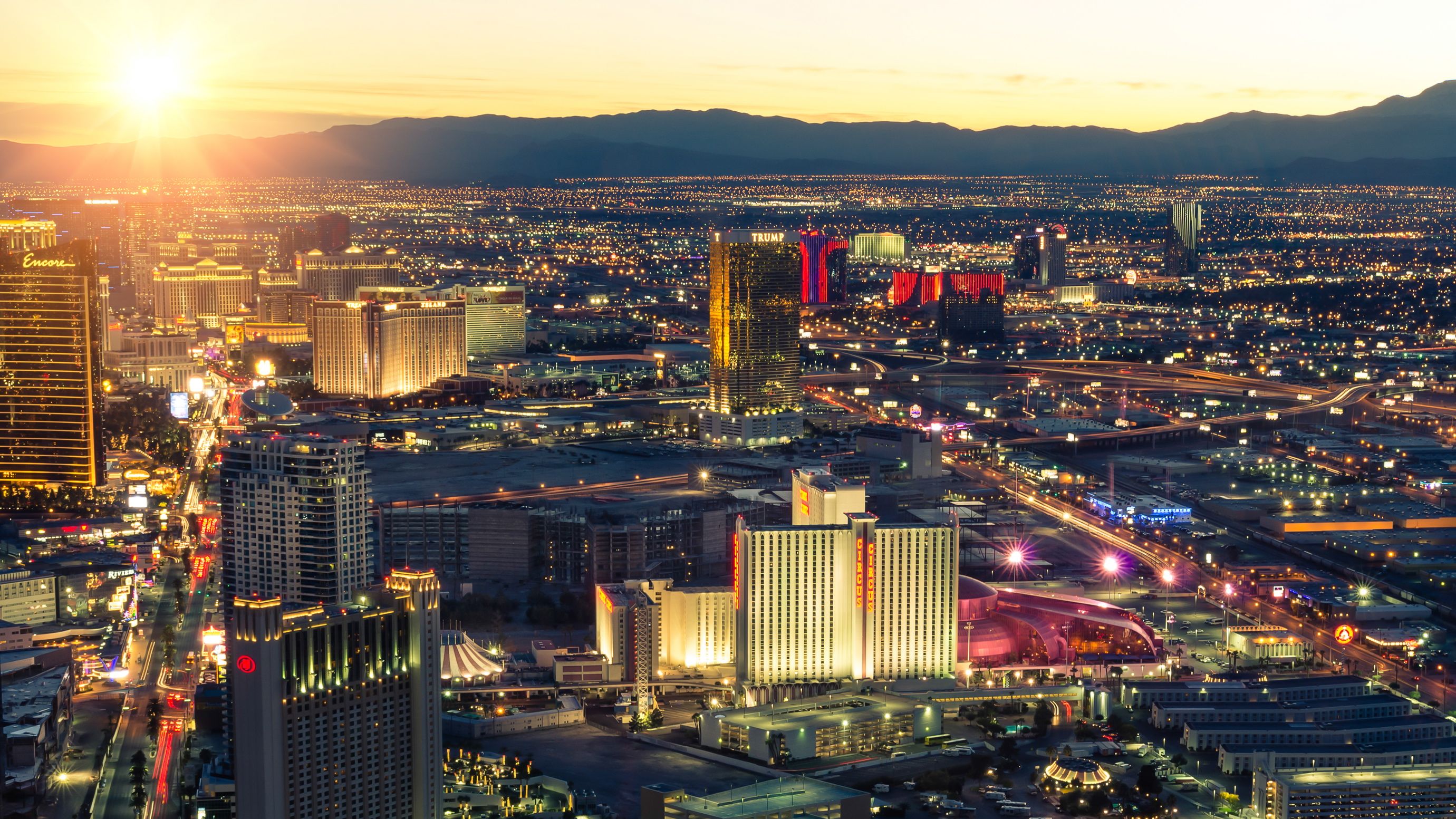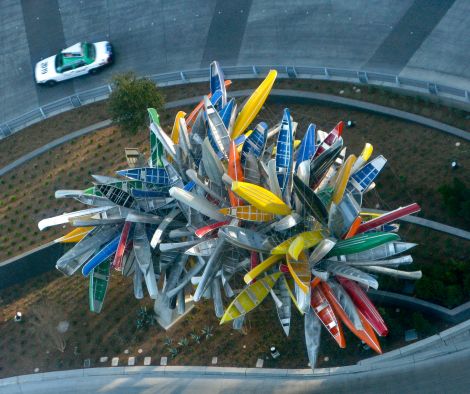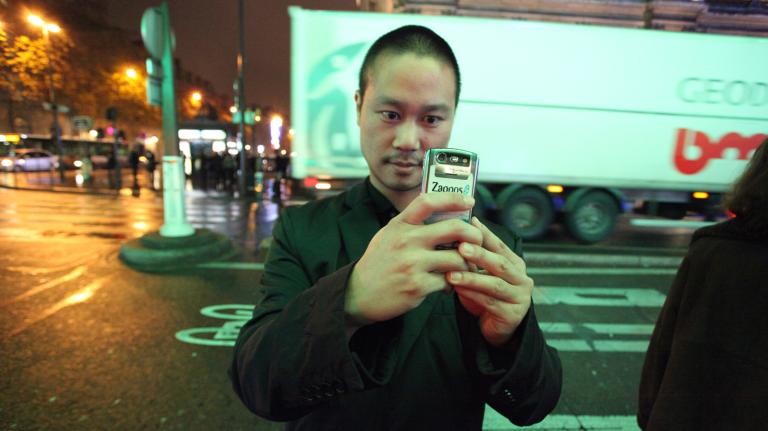On my last night in Las Vegas, I finally ventured into the belly of the beast.
I’d spent a week exploring the Vegas that few people outside the region think about — the sprawling metro area of 2 million people, roughly the size of greater Seattle, that has sprung up on this scorched playa at the edge of the Mojave Desert. It’s where the working stiffs live — the people who wait your tables, mix your drinks, deal your cards, and clean your hotel rooms when you visit. Vegas supports a whole lot of them, and the pay isn’t half bad.
During my time here, I’d talked to water wonks and climate scientists, economists and community gardeners. I found a place full of surprises — a city that’s fighting to create community and some semblance of stability in a famously gonzo locale. But it’d be be a shame to go home without at least catching the Thunder From Down Under, wouldn’t it?
No. No, it wouldn’t. But I did want to see what all the fuss was about. After all, the casinos, hotels, and conference centers on the Strip generate roughly two-thirds of the metro area’s economy. Any effort to build a sustainable future for this city will have to grapple with that reality, build another economic engine for this city, or both.
On the Strip, I figured I’d get a look at the city’s seedy underbelly — a glimpse of where our baser instincts are leading us. But there, too, I was surprised by what I found.
My tour guide for the evening was my old friend Adam Burke, who is the news director at Nevada Public Radio. First stop: the Chandelier Bar, encased a giant, crystal-studded chandelier in the center of the Cosmopolitan casino, for a cocktail called a Smokey the Bear. Served by a jolly, bearded bartender and featuring a healthy shot of whiskey and a homemade ice cube infused with actual smoke, it was a fitting start to an evening spent in the heart of what Adam calls the “burn” — the massive gathering of people who come from around the globe, with the sole purpose, it seems, of setting every last dollar ablaze.
From the Chandelier, the evening morphed into a tour of the Strip’s surprisingly subversive public art, much of it in and around the goliath new CityCenter development, a $9 billion “urban complex” that features not only a 4,000-room hotel-casino, but also 2,400 condos and a mall, and has the rather dubious distinction of being one of the largest LEED-certified structures on the planet. (Why even bother making a building that big green, you wonder? As with so many other things in Vegas, to find the answer, you need only to follow the money.)
Outside CityCenter stands a cactus-like sculpture bristling with — oh damn, those are canoes! The creator, Nancy Rubins, told the Las Vegas Sun that the 200 metal boats are not meant to send any particular message about the city or its dearth of water, but it’s hard not to wonder what the Martian archaeologists are going to make of “Big Edge” when they find it here, in the scorched ruins of the city, many millennia from now.
In the CityCenter basement, at the valet parking drop-off beneath the Aria hotel-casino, Adam and I sat on a bench and ogled artist Jenny Holzer’s “Vegas” — a shimmering, 18-foot-tall LED installation that scrolls one-liners like, “You must have one grand passion,” “If you live simply, there is nothing to worry about,” and “You are so complex that you don’t always respond to danger.”
Again, an artist sending a subtle message to the burners in this place? Maybe a little bit, Holzer told the Sun — but she was given remarkably free rein to craft those messages as she pleased.
We wound through the bowels of the Strip like rats in some neon-lit, subterranean maze, visiting a sculpture that looked like massive marble bones, another that resembled a giant wooden ray gun, and a third that consisted of a series of transparent tubes containing miniature whirlwinds of water that twisted and writhed as we watched.
As we headed back to Adam’s car, we wound back through the Aria at CityCenter. We made our way to the lobby, and I thought we were headed outside, but Adam stopped short about 20 feet from the front desk. He pointed to a delicate line of silver seemingly etched into the air above the clerk’s heads. It reminded me of a stream of molten metal I once saw in the ashes of a house fire.
“What’s that?” he asked.
I looked. “I don’t know.”
“Look again,” he said.
I did. Just a jagged line of metal tracing a mountain skyline or … “Oh shit. It’s the Colorado River.”
Sure enough, it was a gleaming, 87-foot sculpture of the river that feeds this city with 90 percent of its water — a river that is in the midst of an epic, 14-year drought. It was created by architect and sculptor Maya Lin, who designed the Vietnam Veterans Memorial in Washington, D.C., and who also happens to be a dedicated conservationist.

Elaine Asal“Silver River,” by Maya Lin
I pulled up a map of the river on my smartphone and we traced its path along the sculpture. On the far right were the headwaters in the Colorado Rockies, and, moving left, west, the bend where the Colorado meets the Gunnison. There was the sprawling mass of Lake Powell, a reservoir created when the Bureau of Reclamation built the Glen Canyon Dam and flooded a whole maze of red rock canyons in southern Utah. Downstream was Lake Mead, behind Hoover Dam, where Vegas draws its water through a giant straw sunk into the bedrock — a lake now famous for the pale “bathtub rings” that reveal just how far the water has dropped.
From Mead, the river flows down through Lake Havasu and into California, where the All-American Canal siphons off much of what remains of its water for cities and for farmers in the Imperial Valley, who grow 80 percent of the nation’s winter vegetables. Most years, the Colorado peters out not far from there, dying in the desert before it reaches the Gulf of California — but this spring, by some sort of a miracle and years of hard bargaining on the part of conservationists, a pulse of water made it through. The river was whole again, if just for a day.
There it was, the beleaguered Colorado, shimmering like quicksilver over the heads of the Aria clerks as they tended to customers who’d flown in from all over the world for a few nights of debauchery. “Right in the middle of the fucking bonfire,” Adam said.
I came to Las Vegas expecting to find a city on the brink — a city so ill-conceived and corrupt that it would be one of the first to fall as we begin to feel climate change’s full force. It may be just that. Balanced precariously atop that thin silver line through the desert — and atop an industry that, no matter how green its buildings, is fueled by gasoline and jet fuel that bring in 40 million visitors each year — Vegas could see a slow, painful decline.
But compared to a city like Miami, which will likely be blown or flooded right off the map, Vegas faces much slower-moving threats: the gradual rise in temperature, the decades-long decline of the river.
It might seem like a cliché, but the city of Las Vegas itself is a gamble — and the stakes are incredibly high. The big question is who will win and who will lose, and whether those who have built this bonfire will heed the warnings hidden right here, in the heart of the flames, or continue to burn as long as the fuel holds out.



